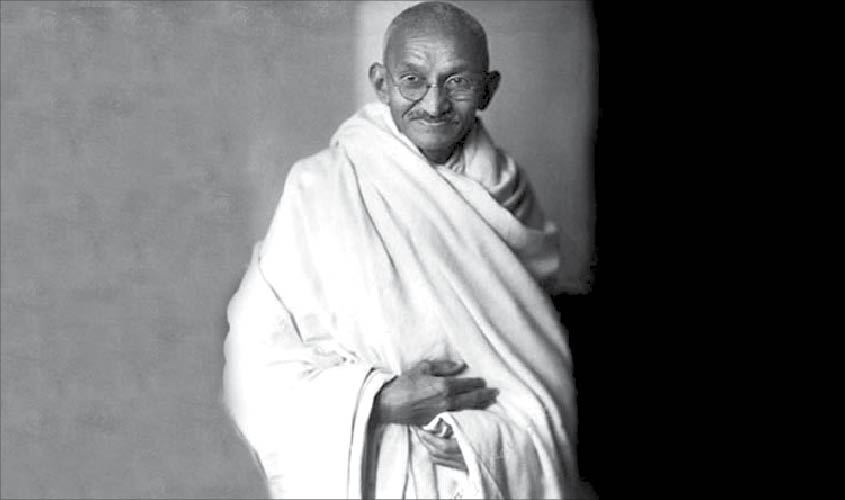During Indira Gandhi’s visit to nine South American countries, it took some effort to convince the media that she was no relation of Mahatma Gandhi.
* Leo Tolstoy to Gandhi. September 1910:
“And so your work in the Transvaalk at the other end of the World as it seems to us, is the most central and most important of all tasks now being done in the World…”
* Nobel Laureate Romain Rolland on Gandhi. 1924:
“This is the man who has stirred three hundred million people to revolt, who has shaken the foundation of the British Empire, who has introduced into human politics the strongest impetus for the last two thousand years.”
* Albert Einsten’s tribute to Gandhi on his 70th birthday. 1939:
“Generations to come, it may be, will scarce believe that such a man this even in flesh and blood walked upon this earth.”
* Nobel Laureate Octavio Paz on Gandhi. 1965:
“Gandhi was miracle.”
Last week I read Ramachandra Guha’s Gandhi: The Years That Changed The World 1914-1948.
This is the final volume of his Gandhi trilogy. The three add up to 2,700 pages. Guha is, without doubt, the most accomplished, celebrated and scintillating authority on Mahatma Gandhi.
The epilogue is the sparkling part of the book. It highlights the range of Gandhi’s activities.
He influenced and changed the lives of many, round the globe. He made them leaders of character and integrity. These included Africans, Asians, Americans, Britons and South Americans. Above all, he awakened hundreds of millions from slumber, teaching to hold their heads high.
I was particularly struck by Guha’s devastating but not unbalanced deflating of Arun Shourie and Arundhati Roy. The former belittled Ambedkar and the latter was dismissive of Gandhi. Guha’s demolition of the two will be long recalled.
Gandhi summed himself up in five words. “My life is my message”.
In October 1968, Indira Gandhi visited nine South American countries. Brazil, Uruguay, Argentina, Chile, Colombia, Venezuela, Trinidad and Tobago and Guyana. She was the first Indian Prime Minister to do so. She was away from India for over three weeks. I was a member of her entourage. It took some effort to convince the media that she was no relation of Mahatma Gandhi.
Before leaving New Delhi, I had informed our ambassadors to let our South American hosts know that beef should not be served. This resulted in a gastronomical situation of high voltage. From Brazil to Venezuela, chicken was served for lunch and dinner. Before the end of the tour, I told the Prime Minister that if I was served any more chicken, I would start laying eggs.
In every capital Indira Gandhi attracted large crowds. The French ambassador in Buenos Aires asked our ambassador, “How much did you spend for collecting such crowds?”
In most countries we were both delighted and surprised to learn that Tagore’s poems were taught in universities. In 1924, the poet was on his way to Asuncion, the capital of landlocked Paraguay. He fell ill on reaching Buenos Aires. Victoria Ocampo, a well-known author, editor of a literary magazine called, SUR, was an enthusiastic admirer of Tagore. She had read Andre Gide’s French translation of Gitanjali.
When Victoria Ocampo heard of his illness, she went to the hotel where Tagore was staying. Diffidently she invited her hero to shift to her large estate, San Isadora, a suburb of Buenos Aires. It was more a palace than a house. She looked after him for three weeks. On the voyage back to Europe, Tagore wrote some of his finest
Indira Gandhi met Victoria Ocampo at her home in San Isadora where she, in her capacity as a Chancellor of Vishva Bharati (Santiniketan), presented Ocampo with a silk scarf made of batik. She conferred on Victoria Ocampo its highest degree, DLitt, honoris causa. I, an inquisitive 35-year-old, peeped into her bedroom. On the table next to the bed stood an autographed photograph of Rabindranath Tagore.
In Bogota, the capital of Colombia, Indira Gandhi was to address both Houses of Parliament. She unknowingly delivered her Senate speech in the House of Representatives, and the speech meant for the House of Representatives in the Senate. Members of each House were more than confused. It was the Colombian Chief of Protocol who took her to the wrong chambers!

